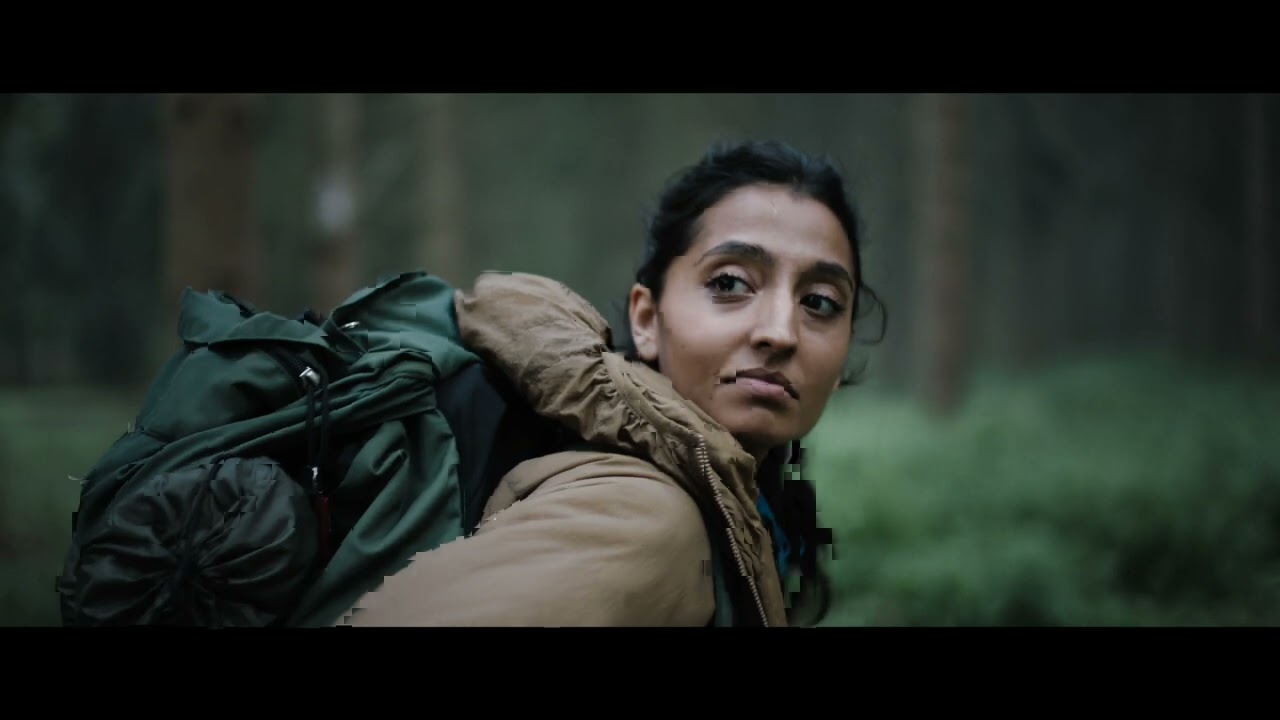In the early months and ancient days of 2020, Indian author Arundhati Roy wrote ‘The Pandemic Is A Portal’, an essay which eventually offered philosophical optimism and hope for the world we could build after our shattering losses to the coronavirus. “Historically, pandemics have forced humans to break with the past and imagine their world anew,” she says. “This one is no different. It is a portal, a gateway between one world and the next.”
The tally of failure and culpability continues to rise in the United Kingdom, but we’re at least able to consider risk-managed expeditions to the café, the cinema and – perhaps scariest – to the office. Into our new world comes Ben Wheatley’s In The Earth, a film written during the UK’s first lockdown and filmed in 15 days when the first set of restrictions were lifted.
Wheatley’s ninth feature has been praised as a return to his roots, by those who favour the psychological crime hybrid Kill List or subversive psychedelic drama A Field In England over his adaptations of Daphne Du Maurier’s Rebecca or JG Ballad’s High-Rise. But it has also been criticised by nonplussed horror fans craving the traditional ghostbusting scares of this year’s installment of The Conjuring or relentless body horrors like the Saw franchise.
Other new releases like Prano Bailey-Bond’s Censor or Netflix’s Fear Street take us back to the 1980s and 1990s, but In The Earth is eye-level with the present. In the midst of an unnamed pandemic, scientist Martin Lowery emerges from months of isolation in search of former colleague Dr Olivia Wendle. Wendle has dropped out of communication while researching the mycorrhizal network – the underground network of fungi sometimes called nature’s internet – in the depths of a suspiciously verdant forest.
Martin arrives at an outpost and passes through the decontamination gate, a portal that promises, at least, some kind of respite from the grinding confines of isolation. It’s a great escape even if it’s dutiful and work-related, and when he buddies up with park ranger Alma for the trek to the interior, we can almost breathe the moist woodland air.
Long before Arundhati Roy struck upon the portal as a symbol for our current circumstances, Aldous Huxley wrote that “The urge to escape from selfhood and the environment is in almost everyone almost all the time,” in The Doors Of Perception & Heaven and Hell. Huxley’s experiments with mescaline in 1953 have more to do with In The Earth than we might readily suppose, as Martin and Alma experience a brutal midnight beating from a mystery attacker who destroys their tents and steals their shoes. They’re forced to press on, the forest floor feeling more like thin ice with every step.
They encounter Reese Shearsmith’s Zac, a reclusive woodsman offering sustenance, shoes and makeshift surgery to suture Martin’s torn foot. Zac’s hospitality soon becomes hellish, as they’re dragged into a world of twisted and ritualistic worship. Tied to chairs and paralysed by poison, there’s no imaginable escape – no portal – metaphorical or otherwise.
It’s here that In The Earth mirrors the multiple fears of the last 18 months. The pandemic has brought upset and outrage into every home. After enduring shock after shock, it’s as if our essential coordinates of safety have changed. The very idea of a quick getaway no longer exists. Wheatley recognises the extent to which our imagined escapes – a weekend, a day with loved ones, a break-even retirement – have been smashed and blighted.
The film amplifies its stunning and crazed effects with a remarkable score and sound design, for which composer Clint Mansell, working during lockdown in Los Angeles, attached pads to vegetation using a PlantWave midi sprout machine. And in a web of long creaks, heavy breathing and uncommon bird calls, it’s silence that becomes alienating. When the forest grows quiet, Alma knows they’re being watched.
Mansell’s synth score links In The Earth with horror classics like The Fog, They Live or Assault On Precinct 13, where director John Carpenter would himself sit down with a synthesizer to create the music. Elsewhere, George A Romero’s Dawn of the Dead has been mentioned as an influence, but Wheatley’s insight turns present-day anxieties over human connections or transcendence from something heavenly into a gold-plated five-alarm perceptual hell.
Martin, outside for the first time in months, tries to reaffirm connections with the people he meets. His grieving spirit is unable to rekindle much from the ashes of the virus-ravaged world. In a quiet exchange, Alma says that things will get back to normal quicker than he thinks; that everyone will forget what happened and go back to their old ways. “I don’t think anyone will forget,” he replies.
But while Martin, Alma, Zac and Dr Wendle are tethered to each other by hope and delusion, their beliefs also allow them to persevere. As we begin again to entertain ideas of elsewhere, escaping into literature or films may be the safer bet. In this new world where loss falls like rain, the bold strokes and strange shocks of In The Earth are the gift of cinema itself.



